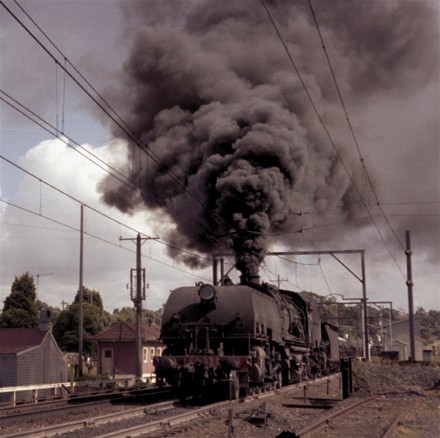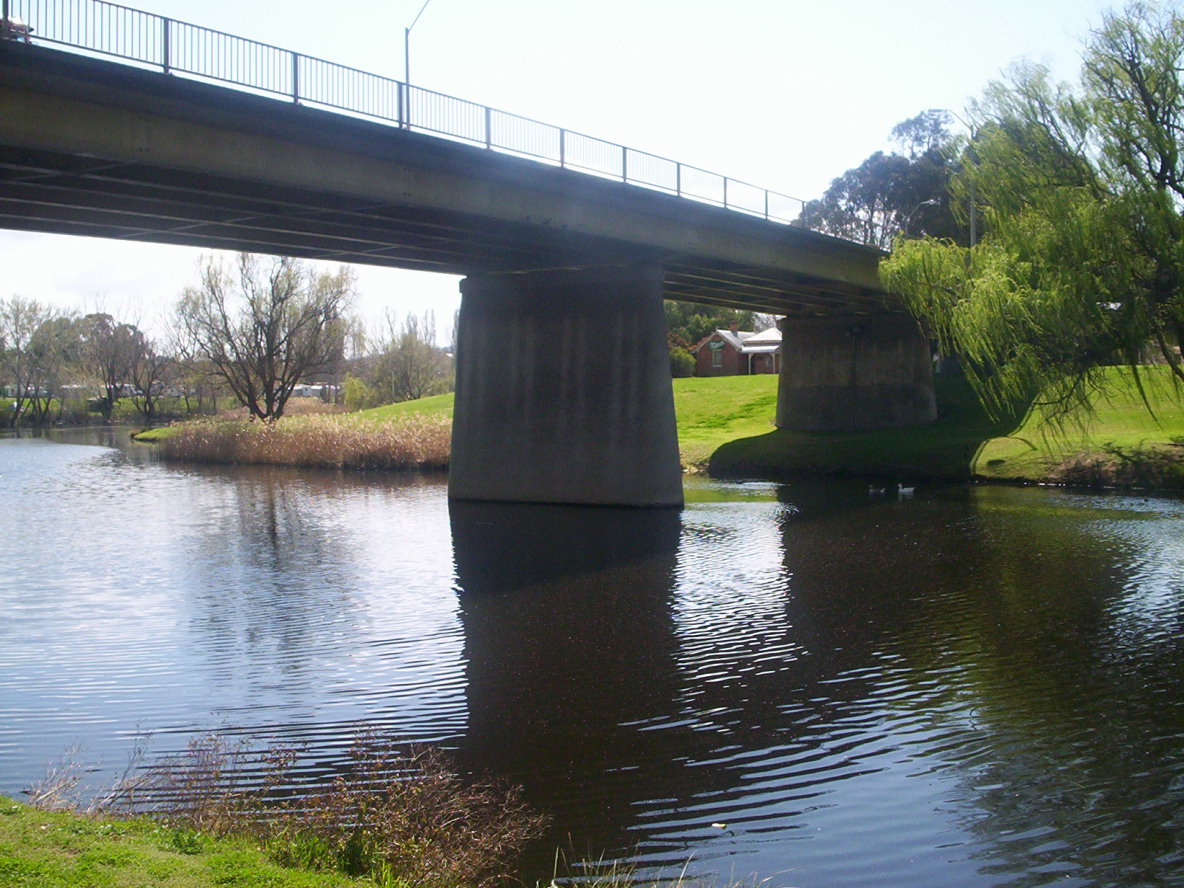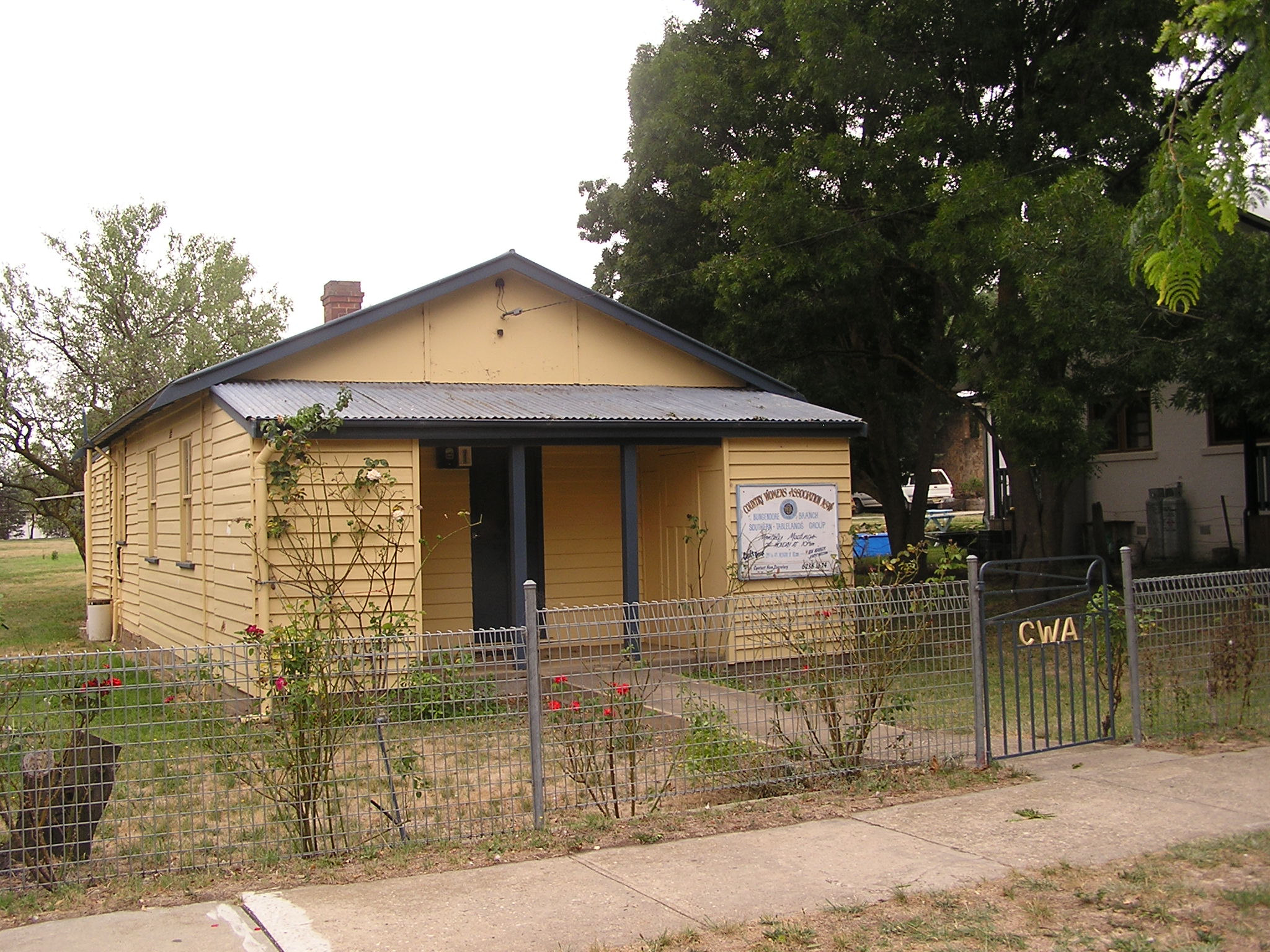|
6029
6029 is a four-cylinder, simple, non-condensing, superheated, articulated 4-8-4+4-8-4 Garratt steam locomotive, of the AD60 class, built by Beyer, Peacock and Company, Manchester, England, for the New South Wales Government Railways (NSWGR). It was restored to operational condition in 2014, and was named ''City of Canberra'' between 2014 and late 2017. Service 6029 entered service in 1954 on the Main North line also working on the Main South and later Main Western line. On 17 February 1959 the locomotive was converted to dual control and had an extension to the coal bunker, increasing its coal capacity. It was withdrawn in September 1972 and condemned on 4 January 1973. In 1974, the National Museum of Australia acquired the locomotive and placed it in the custody of the Australian Railway Historical Society's Canberra Railway Museum. It worked from Sydney to Goulburn in December 1974 before hauling a special charter to Canberra on 5 January 1975. It was restored to operatio ... [...More Info...] [...Related Items...] OR: [Wikipedia] [Google] [Baidu] |
Canberra Railway Museum
The Canberra Railway Museum is located at Kingston in the Australian Capital Territory (ACT), next to Canberra railway station on the Bombala railway line. Since May 2018, Canberra Railway Museum has been the trading name of a not-for-profit company, Capital Region Heritage Rail Limited, established to run the museum, while ACT Heritage Rail Holdings Limited is the company responsible for safeguarding the heritage assets of the museum. Under ownership of the ACT Division, the museum housed locomotives, passenger cars, freight cars, track machinery and railway memorabilia; some of these were operated outside the ACT on tours for the paying public. Notable among the assets were Australia's oldest operating steam locomotive, and one of the world's oldest mainline steam locomotives, the former locomotive no. 1210 of the New South Wales Government Railways (built in 1878) and Australia's most powerful steam locomotive, former New South Wales Beyer, Garratt articulated steam ... [...More Info...] [...Related Items...] OR: [Wikipedia] [Google] [Baidu] |
Garratt
A Garratt (often referred to as a Beyer Garratt) is a type of steam locomotive invented by British engineer Herbert William Garratt that is articulated into three parts. Its boiler, firebox, and cab are mounted on a centre frame or "bridge". The two other parts, one at each end, have a pivot to support the central frame; they consist of a steam engine unit – with driving wheels, trailing wheels, valve gear, and cylinders, and above it, fuel and/or water storage. Articulation permits locomotives to negotiate curves that might restrict large rigid-framed locomotives. The design also provides more driving wheels per unit of locomotive weight, permitting operation on lightly engineered track. Garratt locomotives produced as much as twice the power output of the largest conventional locomotives of railways that introduced them, reducing the need for multiple locomotives and crews. Advantages of the Garratt concept The principal benefit of the Garratt design is that the boil ... [...More Info...] [...Related Items...] OR: [Wikipedia] [Google] [Baidu] |
Garratt Locomotives
A Garratt (often referred to as a Beyer Garratt) is a type of steam locomotive invented by British engineer Herbert William Garratt that is articulated into three parts. Its boiler, firebox, and cab are mounted on a centre frame or "bridge". The two other parts, one at each end, have a pivot to support the central frame; they consist of a steam engine unit – with driving wheels, trailing wheels, valve gear, and cylinders, and above it, fuel and/or water storage. Articulation permits locomotives to negotiate curves that might restrict large rigid-framed locomotives. The design also provides more driving wheels per unit of locomotive weight, permitting operation on lightly engineered track. Garratt locomotives produced as much as twice the power output of the largest conventional locomotives of railways that introduced them, reducing the need for multiple locomotives and crews. Advantages of the Garratt concept The principal benefit of the Garratt design is that the boil ... [...More Info...] [...Related Items...] OR: [Wikipedia] [Google] [Baidu] |
New South Wales AD60 Class Locomotive
The AD60 class were Beyer-Garratt patent articulated four-cylinder, simple, non-condensing, coal-fired superheated, 4-8-4+4-8-4 heavy goods steam locomotives built by Beyer, Peacock and Company for the New South Wales Government Railways in Australia. Design The AD60 Class 4-8-4+4-8-4 Beyer-Garratt patent consists of a boiler carried on a separate frame in the centre of the locomotive and supported by the frames of the two engines, one at each end. The locomotive thus consists of three parts: a front engine unit carrying a water tank, an intermediate chassis pivoted to each engine unit supporting a boiler and cab, and a rear engine unit carrying a coal bunker and water tank. The standard gauge coupled axle loading of and able to negotiate curves. The design incorporated the most modern technology to minimise maintenance and repairs, including: *integral cast steel engine bed frames incorporating the cylinders *large steel boiler with roundtop firebox and flexible stays *mec ... [...More Info...] [...Related Items...] OR: [Wikipedia] [Google] [Baidu] |
Beyer, Peacock And Company
Beyer, Peacock and Company was an English railway locomotive manufacturer with a factory in Openshaw, Manchester. Founded by Charles Beyer, Richard Peacock and Henry Robertson, it traded from 1854 until 1966. The company exported locomotives, and machine tools to service them, throughout the world. Founders German-born Charles Beyer had undertaken engineering training related to cotton milling in Dresden before moving to England in 1831 aged 21. He secured employment as a draughtsman at Sharp, Roberts and Company's Atlas works in central Manchester, which manufactured cotton mill machinery and had just started building locomotives for the Liverpool and Manchester Railway. There he was mentored by head engineer and prolific inventor of cotton mill machinery, Richard Roberts. By the time he resigned 22 years later he was well established as the company's head engineer; he had been involved in producing more than 600 locomotives. Richard Peacock had been chief engineer of the M ... [...More Info...] [...Related Items...] OR: [Wikipedia] [Google] [Baidu] |
4-8-4+4-8-4
Under the Whyte notation for the classification of steam locomotives by wheel arrangement, the is a Garratt articulated locomotive. The wheel arrangement is effectively two 4-8-4 locomotives operating back to back, with the boiler and cab suspended between the two engine units. Each engine unit has two pairs of leading wheels in a leading bogie, followed by four coupled pairs of driving wheels and two pairs of trailing wheels in a trailing bogie. Since the 4-8-4 type is sometimes known as a Northern, the corresponding Garratt type would be referred to as a Double Northern. Overview There were only two classes of 4-8-4+4-8-4 steam locomotives across the globe, all of which were constructed by Beyer, Peacock & Company, the owners of the Garratt patent. The predecessor 4-8-2+2-8-4 Double Mountain was probably the optimal Garratt wheel arrangement, with the four-wheeled leading bogies and the two-wheeled trailing trucks on each engine unit ensuring stability at speed and with ... [...More Info...] [...Related Items...] OR: [Wikipedia] [Google] [Baidu] |
Transport Heritage NSW
In 2013, Transport Heritage NSW was established by the Government of New South Wales to manage the State’s rail heritage collection and provide support to the broader transport (bus, tram, rail) heritage sector in NSW following an independent review. History In May 2013, Minister for Transport Gladys Berejiklian acknowledged the importance of steam locomotive 3801, stating it would be a priority of Transport Heritage NSW to return it to service. On 10 December 2013, a majority of the members of the New South Wales Rail Transport Museum voted in support of the creation of Transport Heritage NSW. Other transport heritage groups also expressed concern for their future existence. Peter Lowry was appointed as chairperson of the board and the nominated chief executive of Transport Heritage NSW, Andrew Killingsworth has been seen as a political appointment. In February 2016, Andrew Moritz was appointed as the new chief executive following the resignation of Andrew Killingsworth. O ... [...More Info...] [...Related Items...] OR: [Wikipedia] [Google] [Baidu] |
Wagga Wagga
Wagga Wagga (; informally called Wagga) is a major regional city in the Riverina region of New South Wales, Australia. Straddling the Murrumbidgee River, with an urban population of more than 56,000 as of June 2018, Wagga Wagga is the state's largest inland city, and is an important agricultural, military, and transport hub of Australia. The ninth largest inland city in Australia, Wagga Wagga is located midway between the two largest cities in Australia—Sydney and Melbourne—and is the major regional centre for the Riverina and South West Slopes regions. The central business district is focused around the commercial and recreational grid bounded by Best and Tarcutta Streets and the Murrumbidgee River and the Sturt Highway. The main shopping street of Wagga is Baylis Street which becomes Fitzmaurice Street at the northern end. The city is accessible from Sydney via the Sturt and Hume Highways, Adelaide via the Sturt Highway and Albury and Melbourne via the Olympic H ... [...More Info...] [...Related Items...] OR: [Wikipedia] [Google] [Baidu] |
Queanbeyan
Queanbeyan ( ) is a city in the south-eastern region of New South Wales, Australia, located adjacent to the Australian Capital Territory in the Southern Tablelands region. Located on the Queanbeyan River, the city is the council seat of the Queanbeyan-Palerang Regional Council. At the , the Queanbeyan part of the Canberra–Queanbeyan built-up area had a population of 37,511. Queanbeyan's economy is based on light construction, manufacturing, service, retail and agriculture. Canberra, Australia's capital, is located to the west, and Queanbeyan is a commuter town. The word ''Queanbeyan'' is the anglicised form of ''Quinbean'', an Aboriginal word meaning ''"clear waters"''. History The first inhabitants of Queanbeyan are Ngambri peoples of the Walgalu Nation, the meeting place of two rivers was known by the local Indigenous population as Quinbean, which is the name of our Historical Journal. The traditional owners, the Ngambri, in ancestral times: Before white man’s arriv ... [...More Info...] [...Related Items...] OR: [Wikipedia] [Google] [Baidu] |
Wangaratta Railway Station
Wangaratta railway station is located on the North East line in Victoria, Australia. It serves the town of Wangaratta, and it opened on 28 October 1873. History Wangaratta opened on 28 October 1873, as the temporary terminus of the line from Benalla, before it was extended to Wodonga on 21 November 1873. A goods shed is located across from the main platform, but has no siding, with the goods shed office itself demolished in 1978. Dock platforms were also once located at both ends of the station. Wangaratta was once the junction for the Whitfield narrow gauge railway line. Footbridges are located at both the south end of the platform and over the northern end of the yard. The main platform and station building is located to the east of the standard gauge "West" line. The original standard gauge line runs in a concrete walled cutting, located between the station and adjoining street, with a number of bridges crossing this cutting to provide station access (this cutting w ... [...More Info...] [...Related Items...] OR: [Wikipedia] [Google] [Baidu] |
Bungendore
Bungendore is a town in the Queanbeyan Region of New South Wales, Australia, in Queanbeyan-Palerang Regional Council. It is on the Kings Highway near Lake George, the Molonglo River Valley and the Australian Capital Territory border. It has become a major tourist centre in recent years, popular with visitors from Canberra and some of it has heritage protection. It has expanded rapidly in recent years as a dormitory town of Canberra. History Prior to European settlement, the area was occupied by the Ngarigo people, whose northernmost lands extended to the southern shore of Lake George and around the base of the steep escarpment lying to the west of what is now Bungendore. The first Europeans in the vicinity were members of the exploratory party of Dr Charles Throsby in 1820, who, along with Hamilton Hume, also originally explored the Braidwood area. In 1824, explorer Allan Cunningham passed through Bungendore. A year later, the first European settlers arrived. The ma ... [...More Info...] [...Related Items...] OR: [Wikipedia] [Google] [Baidu] |
Liquidation (law)
Liquidation is the process in accounting by which a company (law), company is brought to an end in Canada, United Kingdom, United States, Republic of Ireland, Ireland, Australia, New Zealand, Italy, and many other countries. The assets and property of the company are redistributed. Liquidation is also sometimes referred to as winding-up or dissolution, although dissolution (law), dissolution technically refers to the last stage of liquidation. The process of liquidation also arises when customs, an authority or Government agency, agency in a country responsible for collecting and safeguarding Duty (economics), customs duties, determines the final computation or ascertainment of the duties or drawback accruing on an entry. Liquidation may either be compulsory (sometimes referred to as a ''creditors' liquidation'' or ''receivership'' following bankruptcy, which may result in the court creating a "liquidation trust") or voluntary (sometimes referred to as a ''shareholders' liqui ... [...More Info...] [...Related Items...] OR: [Wikipedia] [Google] [Baidu] |




.jpg)

.jpg)

